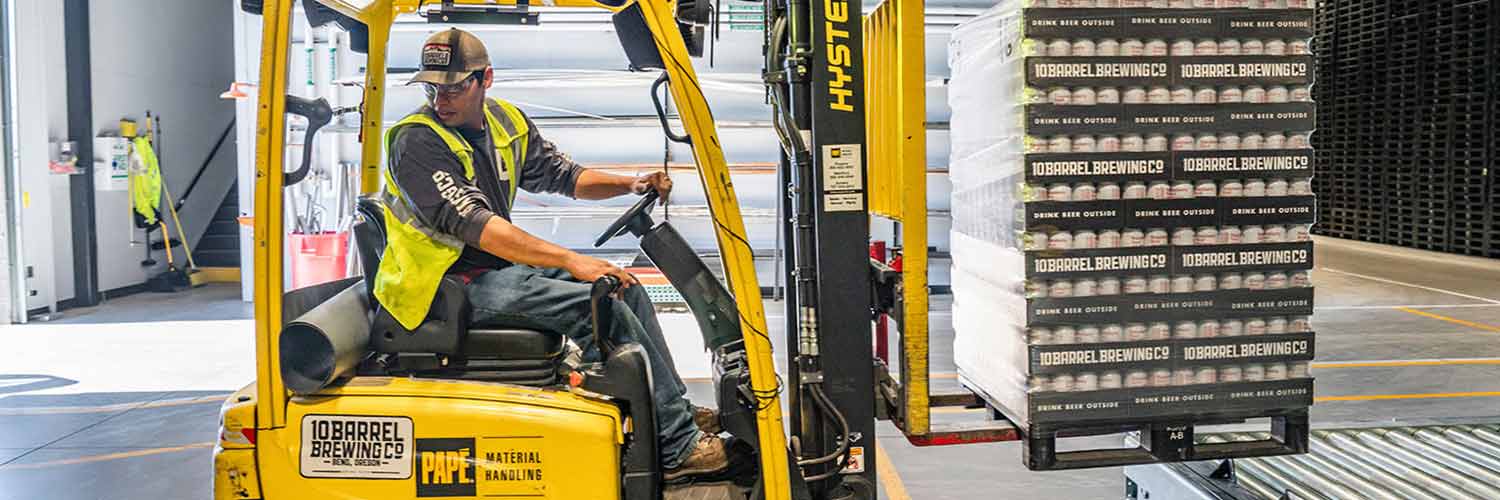By Fiona Villamor on June, 9 2020

In a world filled with volatility and unpredictability, organizations must be prepared to deal with disruption. This is especially true for the manufacturing sector, where the slightest error or variation can have a ripple effect across the production line and the organization.
For example, as the global pandemic closed restaurants and crowded grocery stores, supply chain management had to be reimagined. Manufacturers supplying for restaurants had to adapt and optimize products for groceries—realigning supply chains and repackaging goods to meet tight delivery deadlines and adapt to new consumption habits.
Change doesn’t always happen in this scale but it helps to be prepared, and predictive analytics can supply the foresight needed to anticipate and adapt.
Read the infographic below to get a better idea of how predictive analytics in manufacturing can streamline the production lifecycle, fine-tune product quality, and maximize profit margins.
Download the infographic here.
How manufacturers can benefit from Predictive Analytics
1. Stay on top of production issues
In manufacturing environments, production defects can be costly. These can result in product recalls, scrap and scrap disposal, and reworks—which can all cost a plant billions of dollars. In fact, the most expensive product recall in the US costed the company $26 billion USD. What’s more, complying with regulations costs $180.5 billion USD, which is about 11% of total sales.
It helps then to anticipate where you might encounter quality and reliability issues in the production lifecycle. Through forecasting techniques and real-time business intelligence, determine which areas need attention and can impact predicted quality. Inspect stages or factors that cause abnormal variations and drive up costs in order to implement corrective actions.
Having foresight into potential production quality can help your organization increase efficiency, reduce costs, and even maintain brand reputation.
2. No more surprise equipment failures
Manufacturing plants are often a well-oiled machine. This means that even just a minor malfunction can impact productivity and efficiency across the production line. And not only that, research has shown that equipment failure can play a role in accidents as well. While downtimes are inevitable, they’re manageable when anticipated.
Leverage predictive maintenance analytics to detect machine failures ahead of time. Rather than adopting a preventative approach, aim to predict instead and get foresight into when an asset might fail, need an upgrade, or need an outright replacement.
By addressing probable downtime at an early stage, your organization can adjust maintenance schedules to reduce costs, avoid disruptions, and increase speed to market.
Must-read: Analance Machine Learning: Put an end to unplanned downtimes with Predictive Maintenance Analytics
3. Get a better hold of inventory
Consumer and industry demand can change at a moment’s notice. You’ve probably noticed that shopping habits have changed in wake of the pandemic, with buyers looking for essentials and home products and foregoing non-essentials such as beauty products and consumer electronics. To consistently meet expectations in an ever-changing world, foresight is needed.
With predictive modeling, you can produce just enough and just in time. Use machine learning algorithms to identify consumer trends and guide the production chain for maximum efficiency. Not only will insights help you prepare for changes in volume, but they will also help reduce surplus stock and wastage.
With visibility into demand, your organization can mitigate inventory risk, reduce scrap rate, and increase customer satisfaction.
Related: New normal for retail: Adapting to shoppers with Predictive Analytics
4. Dynamic, better pricing
Speaking of unpredictable, volatile economic conditions and geopolitical uncertainty can affect profitability and determine whether product pricing is effective or not. To illustrate, global manufacturing YOY growth rates have been consistently declining. In order to better manage margins, a more proactive approach is critical.
The key is in dynamic pricing. Utilize predictive analytics to determine the optimal price through association rules with certain dimensions: buying price, production cost, demand, competition, location, season, weather, etc. Predict and adjust prices in response to relevant factors in order to improve sales and profitability.
By incorporating data science in manufacturing, your organization can adjust to unprecedented conditions—while making sure to provide optimal, competitive prices.
Time to plan for change
These four predictive analytics use cases are just the tip of the iceberg. If you want to learn more about how machine learning and analytics can help you stay competitive in an ever-changing market, we’re more than happy to provide more information.
Demo manufacturing analytics solutions on our end-to-end enterprise data science platform, Analance.
ABOUT THE AUTHOR

Fiona Villamor
Fiona Villamor is the lead writer for Ducen IT, a trusted technology solutions provider. In the past 8 years, she has written about big data, advanced analytics, and other transformative technologies and is constantly on the lookout for great stories to tell about the space.











